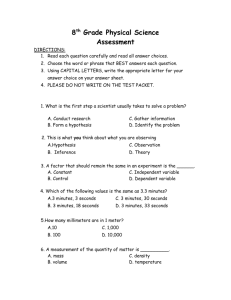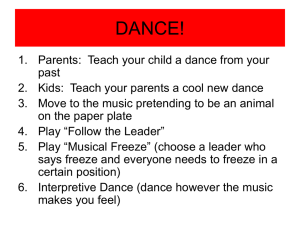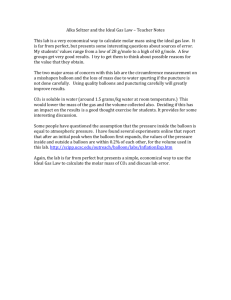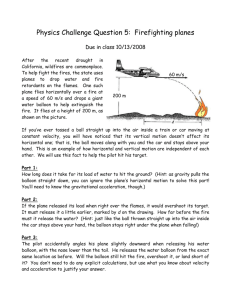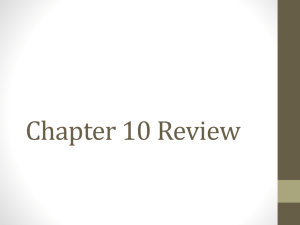8 th Grade Physical Science Assessment
advertisement
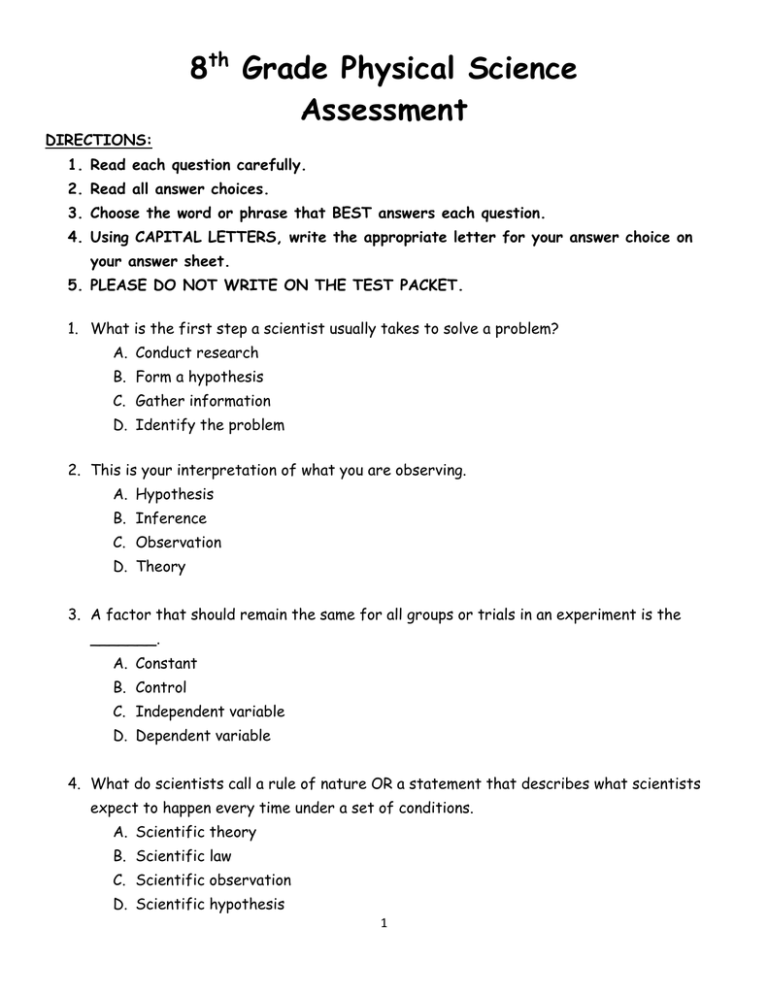
8th Grade Physical Science Assessment DIRECTIONS: 1. Read each question carefully. 2. Read all answer choices. 3. Choose the word or phrase that BEST answers each question. 4. Using CAPITAL LETTERS, write the appropriate letter for your answer choice on your answer sheet. 5. PLEASE DO NOT WRITE ON THE TEST PACKET. 1. What is the first step a scientist usually takes to solve a problem? A. Conduct research B. Form a hypothesis C. Gather information D. Identify the problem 2. This is your interpretation of what you are observing. A. Hypothesis B. Inference C. Observation D. Theory 3. A factor that should remain the same for all groups or trials in an experiment is the _______. A. Constant B. Control C. Independent variable D. Dependent variable 4. What do scientists call a rule of nature OR a statement that describes what scientists expect to happen every time under a set of conditions. A. Scientific theory B. Scientific law C. Scientific observation D. Scientific hypothesis 1 Answer questions 5 - 7 using the information below. A student wants to find out if the temperature of water affects how far her film canister lid launches in the Alka seltzer cannon. She ran her trials using the same film canister, 15 ml of water each time, and one tablet of Alka seltzer each time; but, she changed the temperature of the water as follows: one at room temperature (23C), 10C, 30C, 50C, 70C, and 90C. The following chart shows the results of her experiment: Water Temp. Launch Height Room Temp. (23C) 4m 10C 3m 30C 4.5 m 50C 8m 70C 12 m 90C 9 m 5. The water temperature is the _____. A. Constant B. Control C. Dependent variable D. Independent variable 6. The height of the launch is the _____. A. Constant B. Control C. Dependent variable D. Independent variable 7. Which of the following is/are constants in this experiment? A. Water temperature B. Launch height C. Both A and B D. None of the above 2 8. 1 meter = __?__ millimeters A. 10 B. 100 C. 1,000 D. 10,000 9. A measure of the quantity of matter is ________. A. Mass B. Volume C. Density D. Temperature 10. The diagram on the right shows milk being poured into a measuring cup. Which property of the milk can be directly measured using the cup? A. Mass B. Density C. Solubility D. Volume 11. Which of the following methods would NOT be used to measure volume? A. Measuring the volume of a marble using length x width x height B. Measuring the volume of a rubber stopper using the water displacement method C. Measuring the volume of Gatorade using a graduated cylinder D. Measuring the volume of a brick using length x width x height 12. A golf ball and a ping pong ball are the same size. The golf ball has a greater density than the ping pong ball. The reason for this is: A. The golf ball has a greater volume. B. The golf ball has less volume. C. The golf ball has a greater mass. D. The golf ball has less mass. 13. What type of graph would you use to see if there are any trends in your data? A. Bar B. Circle C. Line D. Scatter plot 3 14. When one variable increases, another variable increases. This is known as what kind of a relationship? A. Cumulative B. Positive C. Negative D. Opposite 15. What is defined as the rate of change of velocity over a period of time? A. Acceleration B. Displacement C. Speed D. Velocity 16. A car travels 50 meters in 25 seconds. What is the car’s average speed? A. 2 m/s B. 0.5 m/s C. 75 m/s D. 25 m/s Use the graph below to answer questions 17 through 19. 17. For the graph above, what is the independent variable? A. Speed B. Force C. Acceleration D. Time 4 18. What does the line segment on the graph from 0 to 3 seconds represent? A. The speed remained constant B. The speed was increasing C. The speed was decreasing D. The ball was not moving 19. Looking back at the graph, what is the acceleration of the ball at 2 seconds? A. 2 m/s B. 2 m/s2 C. 1 m/s D. 1 m/s2 20. An object is considered to be accelerating when _____. A. It speeds up B. It slows down C. It changes direction D. All of the above 21. Consider the diagram below. What is the net force acting on the box? A. B. C. D. 10 N to the left 30 N to the left 45 N to the right 55 N to the right Friction 10 N 30 kg Pull 55 N 22. A car crashes into a tree. Passengers who are not wearing seatbelts continue to move in the direction the car was moving before it hit the tree, possibly being thrown from the car through one of its windows. This is an example of _______. A. Friction B. Gravity C. Inertia D. Newton’s 2nd Law of Motion 23. Which of the following is true about an object falling to the earth? A. It falls faster the heavier it is. B. It falls faster the lighter it is. C. It is slowed by air resistance. D. It falls slower than it would on the moon. 5 24. The reason that a hot air balloon flies is because A. The hot air in the balloon is less dense than the air outside the balloon. B. The hot air in the balloon is more dense than the air outside the balloon. C. The particles of hot air inside the balloon exert pressure on the balloon. D. The particles of cold air outside the balloon exert pressure on the balloon. 25. The greater the mass of an object, _____. A. The faster it accelerates when a force is applied B. The greater the force that is needed to accelerate it C. The more balanced it is D. The more space it takes up 26. How many simple machines are there? A. 6 B. 10 C. 12 D. 15 27. Machines are not very efficient because A. Work input is always less than work output. B. Energy is lost as heat due to friction. C. They multiply the input distance, not the input force. D. They require manpower or electricity to operate. 28. What type of energy does a bowling ball have as it travels down the lane toward the pins? A. Kinetic B. Potential C. Mechanical D. Thermal 29. The potential energy of an object is affected by A. The mass of the object. B. The height of the object above the ground. C. The speed of the object. D. Both A and B 6 30. Energy cannot be created nor destroyed; rather, it just changes forms. This statement is A. False B. The Law of Conservation of Energy C. The Theory of Energy Transformations D. The Kinetic Theory of Matter 31. This is a transfer of heat through the movement of particles in liquids or gases. A. Combustion B. Conduction C. Convection D. Radiation 32. All of the following are good insulators of heat EXCEPT _____. A. Air B. Silver C. Styrofoam D. Wood 33. A solid is a state of matter that has a(n) A. Definite volume and definite shape B. Definite volume and indefinite shape C. Indefinite volume and indefinite shape D. Indefinite volume and definite shape 34. Which graph best represents the relative distance between the particles of most substances in their solid, liquid, and gas states? A. B. C. 7 D. 35. The reason sidewalks are made with cracks between the slabs is because _____. A. The concrete is too heavy to transport otherwise B. The cracks separate the slabs to be the length of approximately two human strides C. Heated objects expand D. Cooled objects expand 36. In a closed container at constant temperature, if the volume of a gas is decreased, then the pressure of the gas _____. A. Decreases B. Increases C. Remains the same D. It depends on the temperature of the gas 37. When you open a bottle/can of soda, bubbles appear, rise to the surface, and burst out of the soda. This is an example of a _____. A. Chemical change B. Chemical reaction C. Physical change D. Physical property 38. In which of the following situations would an object NOT float? A. The weight of the object is 20 N; the buoyant force is 20 N B. The object is less dense than water C. The object has a density less than 1 g/mL D. The weight of the object is 20 N; the buoyant force is 10 N 39. Which of these statements is false? A. Oxygen and copper are examples of elements. B. Elements are pure substances. C. Atoms of different elements can combine to form compounds. D. Atoms of different elements can be the same. 8 40. An uncovered pot of soup is simmering on the stove. Water droplets are forming on the wall above the back of the stove. What sequence can you infer has occurred? A. Melting, then boiling B. Freezing, then thawing C. Boiling, then condensing D. Condensing, then boiling 41. The nucleus of an atom is made up of A. Electrons B. Neutrons C. Protons D. Both B and C 42. Most of the elements on the periodic table are this state of matter at room temperature A. Solid B. Liquid C. Gas D. Plasma 43. Which group of elements is least likely to bond with other elements? A. Alkaline Earth Metals B. Halogens C. Noble Gases D. Nitrogen Group 44. Elements on the periodic table are organized by A. Atomic number B. Atomic mass C. Date of discovery D. According to Mendeleev’s work 45. Most atoms need how many electrons in their outermost energy level to become stable? A. 2 B. 8 C. 10 D. 15 9 46. Elements in the same group have the same A. Number of neutrons B. Number of valence electrons C. Element classification (metal, nonmetal, metalloid) D. Atomic radii (which means they are the same size) 47. Atoms will _______________ to become stable. A. Share electrons B. Transfer electrons C. Both A and B D. None of the above Use the equation below to answer questions 48 and 49. NiCl2 + 2 NaOH Ni(OH)2 + 2 NaCl 48. NaOH is a _____. A. Reactant B. Product C. Coefficient D. Subscript 49. This is an example of a balanced chemical equation. A. True B. False 50. How many atoms does (NH4)2S contain? A. 7 B. 8 C. 10 D. 11 THANK YOU for taking this assessment. Please take your test question packet and answer sheet to the front lab desk and place them in the appropriate bins. Make sure your name is on your answer sheet. 10
